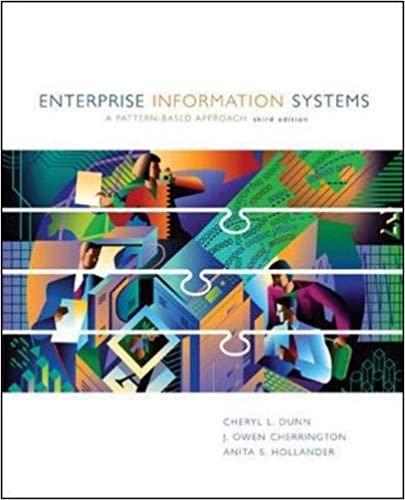Question
Question 1 Unsaved The purpose of adjusting entries is 1. recognize revenue earned but not yet recorded. 2. recognize expenses incurred but not yet recorded.
Question 1 Unsaved The purpose of adjusting entries is
1. recognize revenue earned but not yet recorded.
2. recognize expenses incurred but not yet recorded.
3. recognize the earned portion of services paid for in advance.
4. recognize all of the above.
Question 2. Every adjusting entry involves the recognition of either revenue or expense. Which of the following is alsotrue?
| 1. | There also must be a corresponding change in capital stock. |
| 2. | There also must be a corresponding change in either assets or liabilities. |
| 3. | There also must be a corresponding change in the cash account. |
| 4. | Both (A) and (B). |
Question 3 When recording the adjusting entry to recognize the consumed portion of unexpired insurance, the adjusting entry will include which of the following?
| 1. | A debit to Insurance Expense |
| 2. | A debit to Unexpired Insurance |
| 3. | A credit to Cash |
| 4. | A credit to Insurance Expense |
Question 4The original cost of a physical asset was $45,000. It was purchased on January 5, 2011. It has an estimated useful life of 10 years and has been depreciated under the straight-line method for 5 years. At the end of the 6th year, after adjusting entries have been recorded and posted, the book value of the physical asset will be which of the following?
| 1. | $22,500 |
| 2. | $27,000 |
| 3. | $18,000 |
| 4. | $40,500 |
Question 5 On November 18, the company received $24,000 for services to be performed over the following three months. Cash was debited for $24,000 and Unearned Services Revenue was credited for $24,000. None of the services were provided in November. One-third of the services were completed by December 31. The adjusting entry for December 31 would include which of the following?
| 1. | A debit to Unearned Services Revenue and a credit to Accounts Receivable for $8,000. |
| 2. | A credit to Services Revenue and a debit to Cash for $16,000 |
| 3. | A credit to Services Revenue and a debit to Accounts Receivable for $8,000 |
| 4. | A debit to Unearned Services Revenues and a credit to Services Revenue for $8,000 |
Question 6 On November 16, the company borrowed $24,000 for 90 days at 6% interest. Interest expense was not adjusted at the end of November. The adjusting entry made on December 31 would include which of the following?
| 1. | A debit to Interest Expense of $360 |
| 2. | A debit to Interest Expense of $120 |
| 3. | A credit to Interest Payable of $180 |
| 4. | A credit to Interest Payable of $480 |
Question 7 When adjusting for revenue that has accrued (been earned) but has not been recorded, which of the following will occur?
| 1. | An asset account is increased and a revenue account is increased. |
| 2. | A revenue account is increased and an expense account is increased. |
| 3. | A revenue account is increased and a liability account is decreased. |
| 4. | A revenue account is increased and a liability account is increased. |
Question 8 The realization principle requires:
| 1. | that revenues earned but not yet received be recognized through an adjusting entry. |
| 2. | that unearned revenues originally recorded as earned be converted to a liability through an adjusting entry. |
| 3. | that the consumption of assets originally recorded as assets be recognized as expenses through an adjusting entry. |
| 4. | both (A) and (B). |
Question 9 Which of the following is false?
| 1. | The materiality concept permits charging purchases of low cost items directly to an expense account. |
| 2. | Debiting utilities expense when paid, rather than as the services are used, adheres to the matching principle. |
| 3. | Immaterial amounts of unrecorded expenses may be ignored during the adjusting process. |
| 4. | Adjusting entries may be made based on estimates. |
Question 10 An adjusting entry was made in which Unearned Services Revenue was debited for $4,000 and Services Revenue was credited for $4,000. However, this journal entry was posted to the Unearned Services Revenue account as a debit and to the Office Supplies 10pense account as a credit. As a consequence of this error, the:
| 1. | trial balance will have a credit balance $4,000 greater than the debit balance. |
| 2. | trial balance will have equal totals of debit and credit balances. |
| 3. | trial balance will have a debit balance $4,000 greater than the credit balance. |
| 4. | net income will be overstated $4,000. |
Step by Step Solution
There are 3 Steps involved in it
Step: 1

Get Instant Access to Expert-Tailored Solutions
See step-by-step solutions with expert insights and AI powered tools for academic success
Step: 2

Step: 3

Ace Your Homework with AI
Get the answers you need in no time with our AI-driven, step-by-step assistance
Get Started


